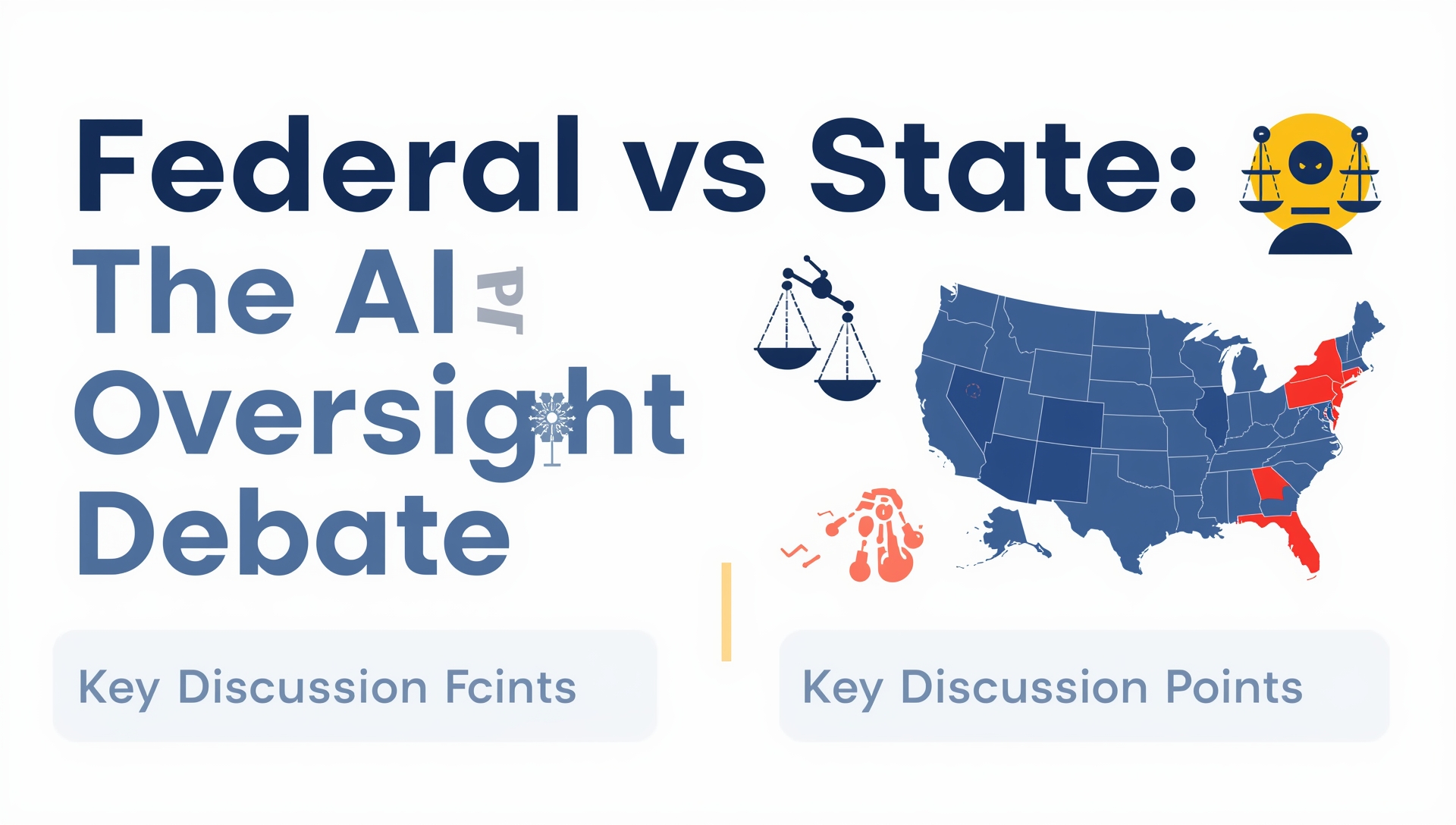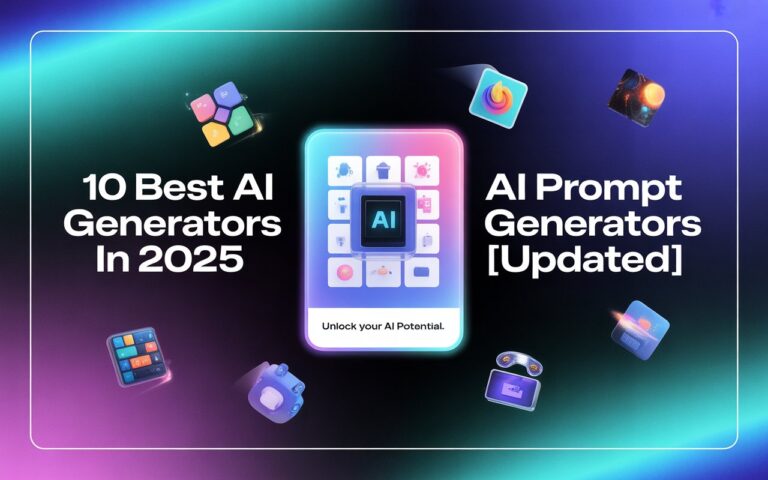
Introduction
Federal vs State Artificial intelligence is already changing how we work, shop, learn, and even drive, so it is no surprise that lawmakers are scrambling to catch up. Federal vs. State the big, unresolved question in the United States is whether that catch-up job should be led by Washington, D.C., or by the fifty different state capitals. Supporters of federal control say a single, national set of rules can be clear, consistent, and strong enough to protect people no matter where they live. On the other hand, advocates of state oversight warn that local governments often spot problems faster and can test new ideas on a smaller scale before rolling them out nationwide. Without a single, agreed-upon framework, the current U.S. AI policy map looks more like a patchwork quilt, stitched together from half-finished proposals, clashing standards, and mounting public anxiety.Federal vs State
This article pulls back the curtain on that ongoing debate, giving you a close look at what Washington has done so far, sharing real-life state-level examples, and naming the gaps and tensions that separate national efforts from local ones.
Overview
Federal vs State AI research and commercial rollout are moving so fast that regulators frequently feel they are chasing a train that has already left the station. In response, the federal government has issued a steady stream of guidance papers, expert reports, and national strategies, each promising to balance innovation with safety. Yet even people inside agencies still wonder whether any of those documents have the force of law and, if they do, where to find them. The short answer is yes and no: there are rules buried in sector-specific statutes, recent executive orders, and voluntary frameworks, but a single law that covers all AI from credit scoring to car brakes has yet to appear.Federal vs State
Although the federal government has put out a handful of soft guidance papers and rules for specific industries, there is still no sweeping nationwide AI law. Because of this gap, individual states have stepped in, rolling out their own AI legal frameworks. As a result, Americans now face the strange mix of one national direction and many local experiments, each pulling in different ways.Federal vs State
Existing and Proposed Federal AI Regulation in the United States
In recent years, Washington has tried several times to tame artificial intelligence. The “Federal AI Regulation 2020,” for example, laid out broad ideas like fairness and accountability. Yet, because these words never became formal law, agencies could easily ignore them.Federal vs State
Multiple offices are working on their own pieces. The Federal Trade Commission AI Regulation pushes for clear disclosures, while the Federal Reserve AI Regulation speaks of financial stability. Still, no single, enforceable federal statute has yet emerged from any of these efforts.Federal vs State
On Capitol Hill, a patchwork of bills sits in committee. One high-profile proposal, nicknamed the Big Beautiful Bill AI Regulation, sought to lock in rules on privacy, open algorithms, and police use of AI. Despite its popularity in some circles, partisan gridlock and competing goals have frozen the bill in place.Federal vs State
Ever wonder what the Federal Acquisition Regulation System really is? It pops up whenever folks talk about how the U.S. government buys anything, including brand-new AI services. The current version of that rulebook shows agencies how to shop for AI tech, yet it still skips over many of the bigger ethical questions people worry about.
Because of that, no single Federal AI Regulation PDF now sits on the desks of agency leaders or Congress. Still, compare that patchwork to EU rules like the AI Act, which sorts tools by risk and spells out strict guardrails. Federal vs State Those differences leave the United States out of sync with some of the toughest guidance on the planet.
States Step In Where Federal Rules Lag
With a national blueprint missing, several states decided they could not wait any longer. California, New York, and Illinois are now at the front, tackling issues like data privacy, facial-recognition bans, and fairness audits. Their quick response shows how states take up AI regulation amid federal standstill, hoping to shield people even as tech rolls forward.Federal vs State
Take Illinois: its Biometric Information Privacy Act has become the gold star others lean on when writing their own laws. Moves like these fit a larger pattern of state oversight, where local lawmakers step into the AI gap and try to steer its impact inside their borders.
Oversight at the state level can look like legislative hearings on police use of facial recognition or congressional probes into how state agencies deploy AI. Meanwhile, at the executive tier, presidential guidance shapes federal agencies but often skips over what each state law permits.
Benefits of Federal and State Approaches
Advantages of Federal AI Regulation
- Consistency – One national rulebook lets businesses operating in multiple states follow the same playbook, cutting down on costly compliance puzzles.
- International Alignment – A clear federal law keeps U.S. standards in step with rules emerging in Europe and other global markets.Federal vs State
- Enforcement Power – Agencies like the Federal Trade Commission can launch investigations and slap fines on companies that misuse AI.
Upsides of State Oversight
- Local Relevance – Governors and lawmakers can craft rules that fit their own communities, addressing concerns in schools, housing, or policing.
- Innovation Hubs – States with lighter controls can attract start-ups, while those worried about risks build stronger safety nets.
- Experimentation – A single state can roll out a new policy first, giving Congress real-world data before nationwide adoption.
Critics argue that wildly different rules in one country after another could end up banning AI in some places, driving firms to pack up or stop pushing new ideas.Federal vs State
FAQs
Are there federal regulations on AI?
Right now, the U.S. does not have a single national law that covers every part of AI. Agencies have their own guidelines, but nothing that rules AI across all industries.Federal vs State
What is the status of the Big Beautiful Bill AI Regulation?
The Big Beautiful Bill grabbed headlines, yet it has not become law. It still stands as a sign of federal ambition halted by ongoing political gridlock.
How does the federal government procure AI technologies?
Buying AI tools is handled under Federal Acquisition Regulation AI, part of the larger Federal Acquisition Regulations System. Even so, those rules mainly spell out how to buy, not how to use tech ethically.Federal vs State
Whats happening with Mexico Federal AI Regulation?
Mexico has begun working on its own federal AI rules, yet it struggles to balance progress with possible harm. The plan is not as detailed as Europes, but interest across Latin America is clearly growing.Federal vs State
What’s the Difference between Federal Law and Federal Regulation?
Federal law starts with a bill that Congress votes on, and then it needs the President’s signature to become official. Federal regulation, however, comes from executive agencies that fill in the details so the law can actually work. Right now in the AI space, we have a mountain of those agency guidelines but almost no formal laws yet.
Final Thoughts
The push for a clear, nationwide policy on artificial intelligence has reached a tipping point. As the tech races ahead, the United States finds itself at an important fork in the road. The tug-of-war between federal AI rules and state control mirrors a broader struggle in our system—balancing national unity with local choice, fostering innovation while still exercising oversight.
Federal rules can offer uniformity and signal global leadership, while state laws allow quick fixes and real-world testing. With Congress so split, progress may depend more on smart teamwork than on one side winning out. Industry, researchers, civil groups, and voters all need to sit down and craft flexible rules that shield people without stifling creativity.
Whether we end up with a long-expected federal rulebook, stronger agency powers, or agile state measures, action is urgent. Delaying further puts America at risk of losing the AI race and, more important, of failing to guard its people in an algorithm-driven future.
As the debate over AI rules heats up, its obvious that regulation is now a question of how soon it arrives and which agencies will be in charge.



